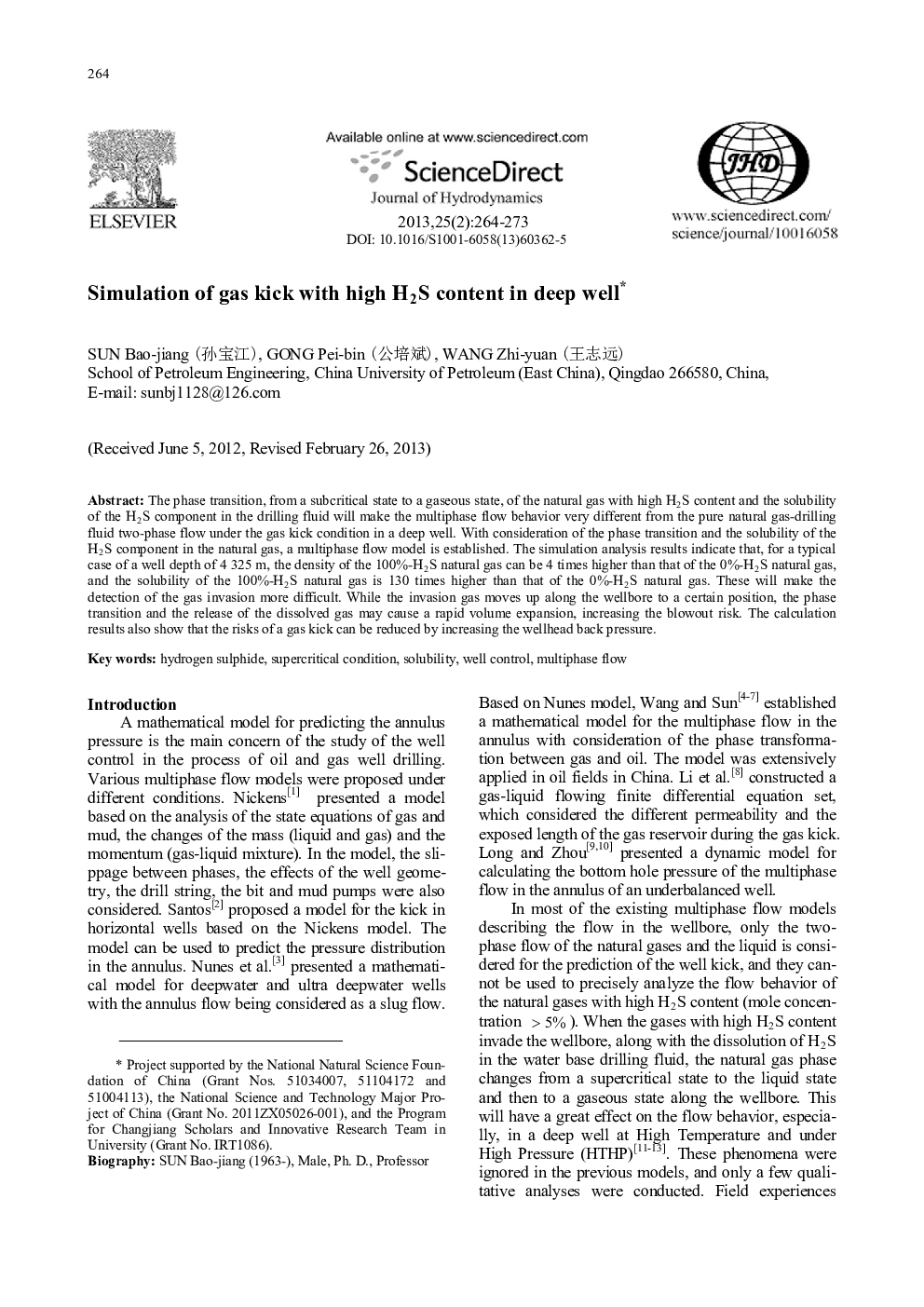| Article ID | Journal | Published Year | Pages | File Type |
|---|---|---|---|---|
| 1722457 | Journal of Hydrodynamics, Ser. B | 2013 | 10 Pages |
Abstract
The phase transition, from a subcritical state to a gaseous state, of the natural gas with high H2S content and the solubility of the H2S component in the drilling fluid will make the multiphase flow behavior very different from the pure natural gas-drilling fluid two-phase flow under the gas kick condition in a deep well. With consideration of the phase transition and the solubility of the H2S component in the natural gas, a multiphase flow model is established. The simulation analysis results indicate that, for a typical case of a well depth of 4 325 m, the density of the 100%-H2S natural gas can be 4 times higher than that of the 0%-H2S natural gas, and the solubility of the 100%-H2S natural gas is 130 times higher than that of the 0%-H2S natural gas. These will make the detection of the gas invasion more difficult. While the invasion gas moves up along the wellbore to a certain position, the phase transition and the release of the dissolved gas may cause a rapid volume expansion, increasing the blowout risk. The calculation results also show that the risks of a gas kick can be reduced by increasing the wellhead back pressure.
Related Topics
Physical Sciences and Engineering
Engineering
Ocean Engineering
Authors
Bao-jiang (åå®æ±), Pei-bin (å
¬å¹æ), Zhi-yuan (çå¿è¿),
